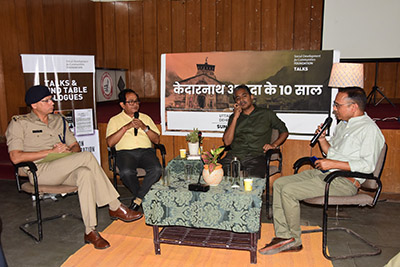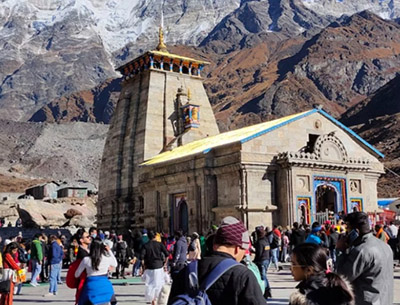DEHRADUN- The 10th anniversary of the 2013 Kedarnath tragedy served as a wakeup call to the Uttarakhand government and as well tourists, who are creating congestion and even stampede-like scenes while on Char Dham Pilgrimage during peak summer months".
If decongestion, proper weather forecasting system and regulation of construction and tourism are not put in place timely, the 2013 Kedarnath-like tragedy can recur in the Himalayan regions, warned the scientists.
As the 10th anniversary of the devastating 2013 Kedarnath tragedy is marked, experts are urging the Uttarakhand government to take immediate action to regulate construction and manage tourism congestion in the Himalayan region.
Dr. YP Sudriyal, a Geology Expert and Adjunct Professor at HNB Garhwal University warned that without proper management, another catastrophe like the one in 2013 could occur, considering the influx of pilgrims to Kedarnath and Himalaya growing over the years.
Dr Sudriyal was speaking at the community dialogue organised by the SDC Foundation at the Uttaranchal Press Club in Dehradun recently, marking the 10-year anniversary of the devastating Kedarnath calamity that occurred in 2013, with experts reflecting on lessons learnt from the tragedy.
He emphasized the importance of preserving the carrying capacity of the Kedar valley, stating that it was originally designed to accommodate only 25,000 pilgrims, yet during the calamity, there were 40,000 people present.
Dr. Sudriyal urged the government to involve experts in the policy-making process and take their advice on issues related to unplanned development and infrastructure projects.
He observed that the all-weather road has been branded as Char Dham road, bringing more tourists in the region.
"Take the result of unplanned development in Joshimath, we have to know the carrying capacity of each area", he cautioned.
Senior journalist Hridayesh Joshi echoed these concerns, pointing out that decisions are being made in Uttarakhand against the advice of scientists, which contributes to the ongoing vulnerability to disaster situations. Joshi suggested prioritizing sustainable roads over wider ones and addressing the demands of villagers for road development in their areas.
He also stressed the need for a warning system in the Himalayas, similar to those in coastal regions, citing the 2021 Raini disaster as an example of the lack of monitoring mechanisms for lakes. Joshi lamented the prioritization of development plans over environmental concerns.
SDRF Commandant Manikant Mishra acknowledged that the impact of the Kedarnath disaster extended beyond the immediate area, affecting the entire Uttarakhand region.
He highlighted the formation of the State Disaster Response Force (SDRF) in response to the calamity and stressed the importance of preparedness.
"We have five companies deployed at 42 key locations to respond to the mishap, he said.
Mishra explained that the SDRF has made significant progress in the past decade, with improved forecasts and strategically deployed teams capable of promptly reaching accident sites.
Mishra advised tourists to remain vigilant about weather conditions and consider the geography and climate when traveling to Uttarakhand.
During the dialogue, the audience raised questions, offered suggestions on policy matters, and expressed concerns about uncontrolled construction and the excessive influx of tourists in Uttarakhand.
The event served as a platform to reflect on the lessons learned from the Kedarnath calamity and emphasized the urgent need to address unregulated construction activities and tourist congestion in the Himalayan regions. It called for a stronger focus on disaster management and raising public awareness.
The dialogue, moderated by senior journalist Sanjeev Kandwal and inaugurated by Prerna Raturi, saw the presence of numerous individuals, including experts like Anoop Nautiyal, Prof. Dr. Harsh Dobhal, Dr. Avinash Joshi, Dr. Sushil Upadhyay, Dr. Madhu Thapliyal, Dr. SP Sati, as well as attendees Ranbir Chaudhary, Pradeep Mehta, Sanjay Joshi, Ganesh Kandwal, Jai Singh Rawat, Rahul Kotiyal, and Pradeep Kukreti.
The pressing message that emerged from the dialogue was the need for immediate action to regulate construction and tourism in the Himalayan regions to prevent future disasters and preserve the fragile ecosystem.










